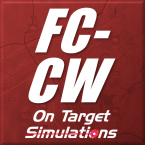IronMikeGolf
Posts: 899
Joined: 3/19/2010
Status: offline

|
@Zakalwe101: I'll add some thoughts and comments to Jim's response. This is a complicated topic and there is a measure of nuance and context involved, so the answer is long-ish.
First, a question: What, precisely, do you mean by "unit facing"? And by "precisely", I mean in the context of Cold War era (and later) tactical doctrine and platform/unit capabilities. I'll argue that, in wargames at the very least, there is a huge discontinuity in that "definition" starting in either late WW I or WW II. Also scale, both distance and time, matter. Let's dissect that a bit.
I'll note that in my profession experience from late 1970's through mid 1990's, the term "facing" never came up. It was "orient" or "orientation", which is more about the focus of the unit's attention/weapons and less about the physical disposition. You "orient on" something, be it an area (like and Engagement Area, Named Area of Interest, or Target area of Interest), an objective, an avenue of approach, etc. Orient in a direction was not often used and where it was used, it was temporary, like at an unscheduled halt. At the vehicle or squad level, you have sectors of responsibility while moving and it is a function of low level unit formation. I'll also note that weapon effectiveness vs target disposition is likely no longer a major factor in weapon effectiveness, when considered over many, many engagements. That is because the geometry of the target array matters most when doing area fire (e.g. machineguns vs dismounted troops). In contrast, AFV engagements are point to point (Tank A vs APC B). In point target engagements, the disposition (e.g. enfilade fire) doesn't really contribute to own vehicle lethality. The is in contarst to, say Napoleonic or American Civial War eras.
Assumption/working definition: I'll go out on a limb for a moment and work with this - "facing" is the direction of weapons, sensors, hull frontal armor and a unit's "attention".
So, looking at your question, there are two aspects you are questioning. One is about what aspect of the target should be used in a direct fire shot and the other is responsiveness of a unit that is fighting in multiple directions. Let's look at these as well as the impact of the game scale (distance, time, and granularity).
First up is scale. As to ground scale, we do not, nor will have, the terrain granularity to be able to determine that "this tank is in defilade from shots to the NW, W, and SW". Oh, and such has a duration of time if either the attacker or defender is moving. And let us not forget that the Line of Sight may not be the same for each member of either unit, owing to very localized (<500 m) differences in terrain for each member. Such things are best left to squad level combat engines, not battalion+ level ones. we're not going there.
Even at the level we do use to determine flank or rear/top shots, how long does that advantage persist? My professional experience tells me that is is, for the vast majority of engagements, mere seconds. Consider that reorienting for combat vehicles these days is in many circumstances only a 2 second turret traverse.
Can a moving unit do anything to mitigate risk of flank shots? Of course. Units do that, based on known or suspected (meaning "that's a good place to defend from") enemy locations. But again, we are not going to check LOS below 500m intervals. This is the crux of our model giving a flank shot for only the opening shot to units that are unspotted when they shoot. Anecdotal info: as a company Bradley Maser Gunner, I was the gunner for a mech Company Commander. One of my duties, (apart from converting a stock M2A2 onto a C2 Bradley before there was such an animal) was battle tracking for our company. So, I was responsible for disseminating current situation to the platoons. I'd drop into platoon comms nets to do that. Things like telling 2d Plt "enemy spotted in wood line to your 9 o'clock". This was before digital battlefield info systems. With that knowledge, platoons and crews can take advantage of local terrain to mask themselves from the threat.
Even a vehicle unit road marching down a hardball road is not going to present an incredibly vulnerable target after the opening shot. The combat cycle in the game is basically one minute and that is plenty of time for a unit is Hasty move to respond before the next increment of fire. That first one can be devastating for sure. The following ones, much less so.
Infantry vs vehicles in built up areas is another case. If the engagement is in the same hex as the inf unit and the area is sufficiently built up, then we assume this affords either opportunities at rear shots or there are multi-story buildings affording shots at upper armor. Again, we apply this in the case of unspotted infantry units only, as situational awareness on the part of the target units presumes actions to mitigate thee opportunities.
One thing we have examined that fits the game's physical and time scale and granularity is the effect on a unit that finds itself fighting in multiple simultaneous directions. This turns out to be very nuanced and will likely be some future work.
_____________________________
Jeff
Sua Sponte
|
 Printable Version
Printable Version







 New Messages
New Messages No New Messages
No New Messages Hot Topic w/ New Messages
Hot Topic w/ New Messages Hot Topic w/o New Messages
Hot Topic w/o New Messages Locked w/ New Messages
Locked w/ New Messages Locked w/o New Messages
Locked w/o New Messages Post New Thread
Post New Thread